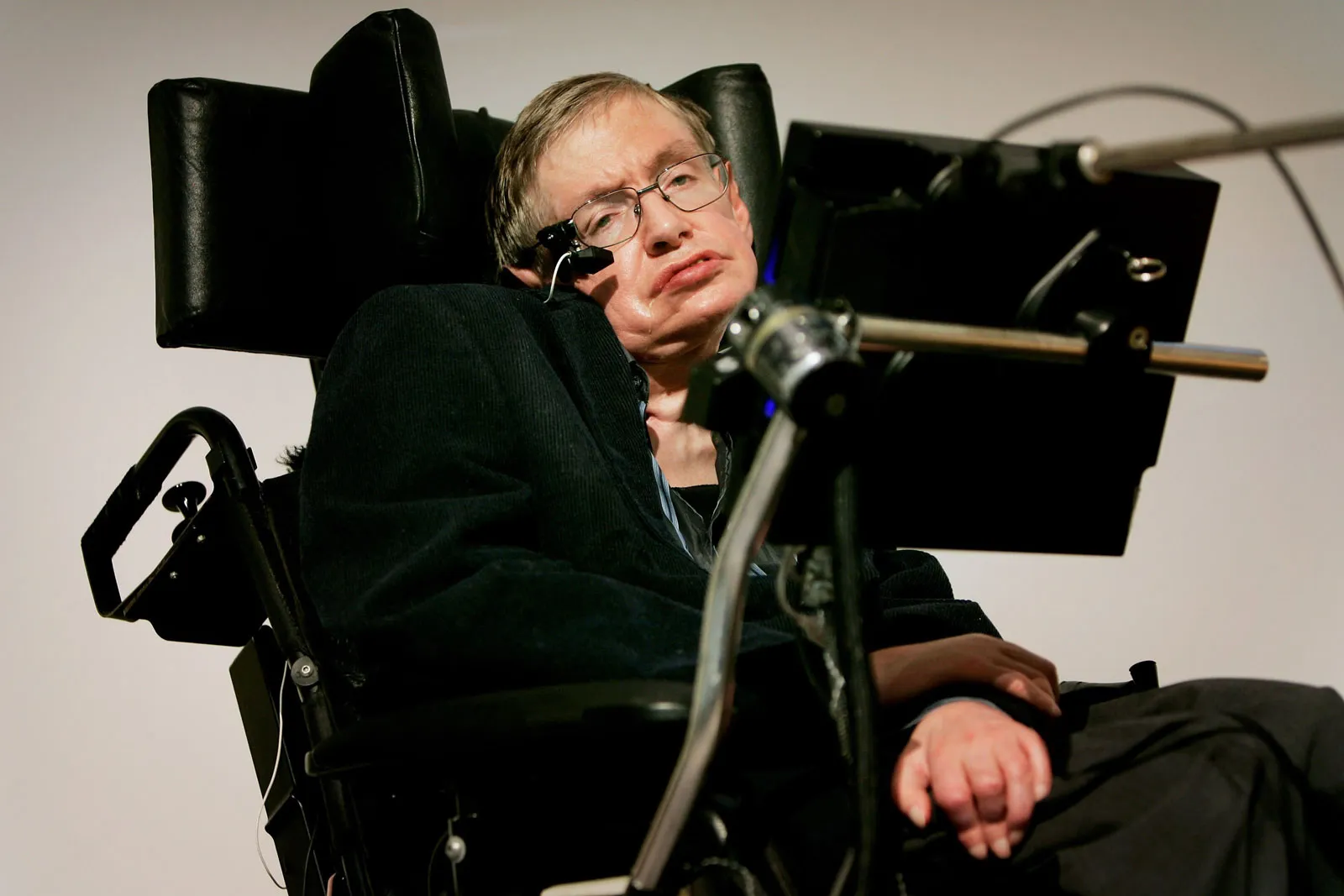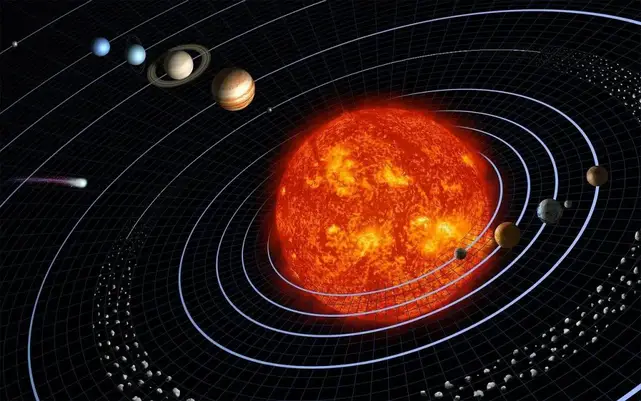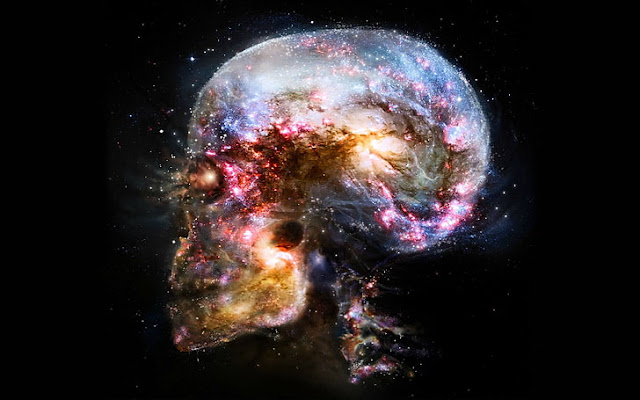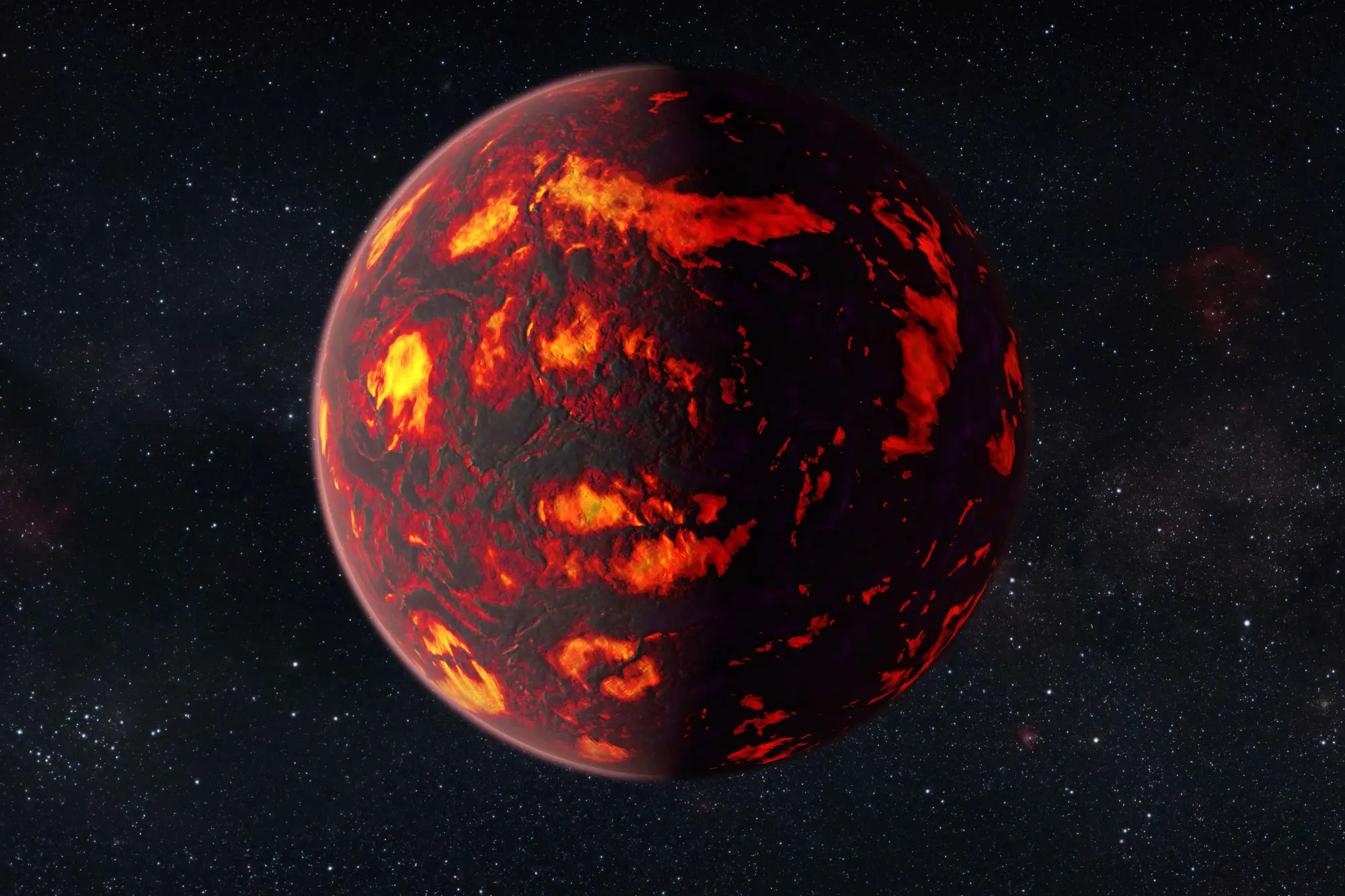Theoretical physicist who made revolutionary contributions to our understanding of the nature of the universe

The image of Stephen Hawking – who has died aged 76 – in his motorised wheelchair, with head contorted slightly to one side and hands crossed over to work the controls, caught the public imagination, as a true symbol of the triumph of mind over matter. As with the Delphic oracle of ancient Greece, physical impairment seemed compensated by almost supernatural gifts, which allowed his mind to roam the universe freely, upon occasion enigmatically revealing some of its secrets hidden from ordinary mortal view.
Of course, such a romanticised image can represent but a partial truth. Those who knew Hawking would clearly appreciate the dominating presence of a real human being, with an enormous zest for life, great humour, and tremendous determination, yet with normal human weaknesses, as well as his more obvious strengths. It seems clear that he took great delight in his commonly perceived role as “the No 1 celebrity scientist”; huge audiences would attend his public lectures, perhaps not always just for scientific edification.
The scientific community might well form a more sober assessment. He was extremely highly regarded, in view of his many greatly impressive, sometimes revolutionary, contributions to the understanding of the physics and the geometry of the universe.
Hawking had been diagnosed shortly after his 21st birthday as suffering from an unspecified incurable disease, which was then identified as the fatal degenerative motor neurone disease amyotrophic lateral sclerosis, or ALS. Soon afterwards, rather than succumbing to depression, as others might have done, he began to set his sights on some of the most fundamental questions concerning the physical nature of the universe. In due course, he would achieve extraordinary successes against the severest physical disabilities. Defying established medical opinion, he managed to live another 55 years.
His background was academic, though not directly in mathematics or physics. His father, Frank, was an expert in tropical diseases and his mother, Isobel (nee Walker), was a free-thinking radical who had a great influence on him. He was born in Oxford and moved to St Albans, Hertfordshire, at eight. Educated at St Albans school, he won a scholarship to study physics at University College, Oxford. He was recognised as unusually capable by his tutors, but did not take his work altogether seriously. Although he obtained a first-class degree in 1962, it was not a particularly outstanding one.
He decided to continue his career in physics at Trinity Hall, Cambridge, proposing to study under the distinguished cosmologist Fred Hoyle. He was disappointed to find that Hoyle was unable to take him, the person available in that area being Dennis Sciama, unknown to Hawking at the time. In fact, this proved fortuitous, for Sciama was becoming an outstandingly stimulating figure in British cosmology, and would supervise several students who were to make impressive names for themselves in later years (including the future astronomer royal Lord Rees of Ludlow).
Sciama seemed to know everything that was going on in physics at the time, especially in cosmology, and he conveyed an infectious excitement to all who encountered him. He was also very effective in bringing together people who might have things of significance to communicate with one another.
When Hawking was in his second year of research at Cambridge, I (then at Birkbeck College in London) had established a certain mathematical theorem of relevance. This showed, on the basis of a few plausible assumptions (by the use of global/topological techniques largely unfamiliar to physicists at the time) that a collapsing over-massive star would result in a singularity in space-time – a place where it would be expected that densities and space-time curvatures would become infinite – giving us the picture of what we now refer to as a “black hole”. Such a space-time singularity would lie deep within a “horizon”, through which no signal or material body can escape. (This picture had been put forward by J Robert Oppenheimer and Hartland Snyder in 1939, but only in the special circumstance where exact spherical symmetry was assumed. The purpose of this new theorem was to obviate such unrealistic symmetry assumptions.) At this central singularity, Einstein’s classical theory of general relativity would have reached its limits.
Meanwhile, Hawking had also been thinking about this kind of problem with George Ellis, who was working on a PhD at St John’s College, Cambridge. The two men had been working on a more limited type of “singularity theorem” that required an unreasonably restrictive assumption. Sciama made a point of bringing Hawking and me together, and it did not take Hawking long to find a way to use my theorem in an unexpected way, so that it could be applied (in a time-reversed form) in a cosmological setting, to show that the space-time singularity referred to as the “big bang” was also a feature not just of the standard highly symmetrical cosmological models, but also of any qualitatively similar but asymmetrical model.
Some of the assumptions in my original theorem seem less natural in the cosmological setting than they do for collapse to a black hole. In order to generalise the mathematical result so as to remove such assumptions, Hawking embarked on a study of new mathematical techniques that appeared relevant to the problem.
A powerful body of mathematical work known as Morse theory had been part of the machinery of mathematicians active in the global (topological) study of Riemannian spaces. However, the spaces that are used in Einstein’s theory are really pseudo-Riemannian and the relevant Morse theory differs in subtle but important ways. Hawking developed the necessary theory for himself (aided, in certain respects, by Charles Misner, Robert Geroch and Brandon Carter) and was able to use it to produce new theorems of a more powerful nature, in which the assumptions of my theorem could be considerably weakened, showing that a big-bang-type singularity was a necessary implication of Einstein’s general relativity in broad circumstances.
A few years later (in a paper published by the Royal Society in 1970, by which time Hawking had become a fellow “for distinction in science” of Gonville and Caius College, Cambridge), he and I joined forces to publish an even more powerful theorem which subsumed almost all the work in this area that had gone before.
In 1967, Werner Israel published a remarkable paper that had the implication that non-rotating black holes, when they had finally settled down to become stationary, would necessarily become completely spherically symmetrical. Subsequent results by Carter, David Robinson and others generalised this to include rotating black holes, the implication being that the final space-time geometry must necessarily accord with an explicit family of solutions of Einstein’s equations found by Roy Kerr in 1963. A key ingredient to the full argument was that if there is any rotation present, then there must be complete axial symmetry. This ingredient was basically supplied by Hawking in 1972.
The very remarkable conclusion of all this is that the black holes that we expect to find in nature have to conform to this Kerr geometry. As the great theoretical astrophysicist Subrahmanyan Chandrasekhar subsequently commented, black holes are the most perfect macroscopic objects in the universe, being constructed just out of space and time; moreover, they are the simplest as well, since they can be exactly described by an explicitly known geometry (that of Kerr).
Following his work in this area, Hawking established a number of important results about black holes, such as an argument for its event horizon (its bounding surface) having to have the topology of a sphere. In collaboration with Carter and James Bardeen, in work published in 1973, he established some remarkable analogies between the behaviour of black holes and the basic laws of thermodynamics, where the horizon’s surface area and its surface gravity were shown to be analogous, respectively, to the thermodynamic quantities of entropy and temperature. It would be fair to say that in his highly active period leading up to this work, Hawking’s research in classical general relativity was the best anywhere in the world at that time.
Hawking, Bardeen and Carter took their “thermodynamic” behaviour of black holes to be little more than just an analogy, with no literal physical content. A year or so earlier, Jacob Bekenstein had shown that the demands of physical consistency imply – in the context of quantum mechanics – that a black hole must indeed have an actual physical entropy (“entropy” being a physicist’s measure of “disorder”) that is proportional to its horizon’s surface area, but he was unable to establish the proportionality factor precisely. Yet it had seemed, on the other hand, that the physical temperature of a black hole must be exactly zero, inconsistently with this analogy, since no form of energy could escape from it, which is why Hawking and his colleagues were not prepared to take their analogy completely seriously.
Hawking had then turned his attention to quantum effects in relation to black holes, and he embarked on a calculation to determine whether tiny rotating black holes that might perhaps be created in the big bang would radiate away their rotational energy. He was startled to find that irrespective of any rotation they would radiate away their energy – which, by Einstein’s E=mc2, means their mass. Accordingly, any black hole actually has a non-zero temperature, agreeing precisely with the Bardeen-Carter-Hawking analogy. Moreover, Hawking was able to supply the precise value “one quarter” for the entropy proportionality constant that Bekenstein had been unable to determine.
This radiation coming from black holes that Hawking predicted is now, very appropriately, referred to as Hawking radiation. For any black hole that is expected to arise in normal astrophysical processes, however, the Hawking radiation would be exceedingly tiny, and certainly unobservable directly by any techniques known today. But he argued that very tiny black holes could have been produced in the big bang itself, and the Hawking radiation from such holes would build up into a final explosion that might be observed. There appears to be no evidence for such explosions, showing that the big bang was not so accommodating as Hawking wished, and this was a great disappointment to him.
These achievements were certainly important on the theoretical side. They established the theory of black-hole thermodynamics: by combining the procedures of quantum (field) theory with those of general relativity, Hawking established that it is necessary also to bring in a third subject, thermodynamics. They are generally regarded as Hawking’s greatest contributions. That they have deep implications for future theories of fundamental physics is undeniable, but the detailed nature of these implications is still a matter of much heated debate.
Hawking himself was able to conclude from all this (though not with universal acceptance by particle physicists) that those fundamental constituents of ordinary matter – the protons – must ultimately disintegrate, although with a decay rate that is beyond present-day techniques for observing it. He also provided reasons for suspecting that the very rules of quantum mechanics might need modification, a viewpoint that he seemed originally to favour. But later (unfortunately, in my own opinion) he came to a different view, and at the Dublin international conference on gravity in July 2004, he publicly announced a change of mind (thereby conceding a bet with the Caltech physicist John Preskill) concerning his originally predicted “information loss” inside black holes.
Following his black-hole work, Hawking turned his attentions to the problem of quantum gravity, developing ingenious ideas for resolving some of the basic issues. Quantum gravity, which involves correctly imposing the quantum procedures of particle physics on to the very structure of space-time, is generally regarded as the most fundamental unsolved foundational issue in physics. One of its stated aims is to find a physical theory that is powerful enough to deal with the space-time singularities of classical general relativity in black holes and the big bang.
Hawking’s work, up to this point, although it had involved the procedures of quantum mechanics in the curved space-time setting of Einstein’s general theory of relativity, did not provide a quantum gravity theory. That would require the “quantisation” procedures to be applied to Einstein’s curved space-time itself, not just to physical fields within curved space-time.
With James Hartle, Hawking developed a quantum procedure for handling the big-bang singularity. This is referred to as the “no-boundary” idea, whereby the singularity is replaced by a smooth “cap”, this being likened to what happens at the north pole of the Earth, where the concept of longitude loses meaning (becomes singular) while the north pole itself has a perfectly good geometry.
To make sense of this idea, Hawking needed to invoke his notion of “imaginary time” (or “Euclideanisation”), which has the effect of converting the “pseudo-Riemannian” geometry of Einstein’s space-time into a more standard Riemannian one. Despite the ingenuity of many of these ideas, grave difficulties remain (one of these being how similar procedures could be applied to the singularities inside black holes, which is fundamentally problematic).
There are many other approaches to quantum gravity being pursued worldwide, and Hawking’s procedures, though greatly respected and still investigated, are not the most popularly followed, although all others have their share of fundamental difficulties also.
To the end of his life, Hawking continued with his research into the quantum-gravity problem, and the related issues of cosmology. But concurrently with his strictly research interests, he became increasingly involved with the popularisation of science, and of his own ideas in particular. This began with the writing of his astoundingly successful book A Brief History of Time (1988), which was translated into some 40 languages and sold over 25m copies worldwide.
Undoubtedly, the brilliant title was a contributing factor to the book’s phenomenal success. Also, the subject matter is something that grips the public imagination. And there is a directness and clarity of style, which Hawking must have developed as a matter of necessity when trying to cope with the limitations imposed by his physical disabilities. Before needing to rely on his computerised speech, he could talk only with great difficulty and expenditure of effort, so he had to do what he could with short sentences that were directly to the point. In addition, it is hard to deny that his physical condition must itself have caught the public’s imagination.
Although the dissemination of science among a broader public was certainly one of Hawking’s aims in writing his book, he also had the serious purpose of making money. His financial needs were considerable, as his entourage of family, nurses, healthcare helpers and increasingly expensive equipment demanded. Some, but not all, of this was covered by grants.
To invite Hawking to a conference always involved the organisers in serious calculations. The travel and accommodation expenses would be enormous, not least because of the sheer number of people who would need to accompany him. But a popular lecture by him would always be a sell-out, and special arrangements would be needed to find a lecture hall that was big enough. An additional factor would be the ensuring that all entrances, stairways, lifts, and so on would be adequate for disabled people in general, and for his wheelchair in particular.
He clearly enjoyed his fame, taking many opportunities to travel and to have unusual experiences (such as going down a mine shaft, visiting the south pole and undergoing the zero-gravity of free fall), and to meet other distinguished people.
The presentational polish of his public lectures increased with the years. Originally, the visual material would be line drawings on transparencies, presented by a student. But in later years impressive computer-generated visuals were used. He controlled the verbal material, sentence by sentence, as it would be delivered by his computer-generated American-accented voice. High-quality pictures and computer-generated graphics also featured in his later popular books The Illustrated Brief History of Time (1996) and The Universe in a Nutshell (2001). With his daughter Lucy he wrote the expository children’s science book George’s Secret Key to the Universe (2007), and he served as an editor, co-author and commentator for many other works of popular science.
He received many high accolades and honours. In particular, he was elected a fellow of the Royal Society at the remarkably early age of 32 and received its highest honour, the Copley medal, in 2006. In 1979, he became the 17th holder of the Lucasian chair of natural philosophy in Cambridge, some 310 years after Sir Isaac Newton became its second holder. He became a Companion of Honour in 1989. He made a guest appearance on the television programme Star Trek: The Next Generation, appeared in cartoon form on The Simpsons and was portrayed in the movie The Theory of Everything (2014).
It is clear that he owed a great deal to his first wife, Jane Wilde, whom he married in 1965, and with whom he had three children, Robert, Lucy and Timothy. Jane was exceptionally supportive of him in many ways. One of the most important of these may well have been in allowing him to do things for himself to an unusual extent.
He was an extraordinarily determined person. He would insist that he should do things for himself. This, in turn, perhaps kept his muscles active in a way that delayed their atrophy, thereby slowing the progress of the disease. Nevertheless, his condition continued to deteriorate, until he had almost no movement left, and his speech could barely be made out at all except by a very few who knew him well.
He contracted pneumonia while in Switzerland in 1985, and a tracheotomy was necessary to save his life. Strangely, after this brush with death, the progress of his degenerative disease seemed to slow to a virtual halt. His tracheotomy prevented any form of speech, however, so that acquiring a computerised speech synthesiser came as a necessity at that time.
In the aftermath of his encounter with pneumonia, the Hawkings’ home was almost taken over by nurses and medical attendants, and he and Jane drifted apart. They were divorced in 1995. In the same year, Hawking married Elaine Mason, who had been one of his nurses. Her support took a different form from Jane’s. In his far weaker physical state, the love, care and attention that she provided sustained him in all his activities. Yet this relationship also came to an end, and he and Elaine were divorced in 2007.
Despite his terrible physical circumstance, he almost always remained positive about life. He enjoyed his work, the company of other scientists, the arts, the fruits of his fame, his travels. He took great pleasure in children, sometimes entertaining them by swivelling around in his motorised wheelchair. Social issues concerned him. He promoted scientific understanding. He could be generous and was very often witty. On occasion he could display something of the arrogance that is not uncommon among physicists working at the cutting edge, and he had an autocratic streak. Yet he could also show a true humility that is the mark of greatness.
Hawking had many students, some of whom later made significant names for themselves. Yet being a student of his was not easy. He had been known to run his wheelchair over the foot of a student who caused him irritation. His pronouncements carried great authority, but his physical difficulties often caused them to be enigmatic in their brevity. An able colleague might be able to disentangle the intent behind them, but it would be a different matter for an inexperienced student.
To such a student, a meeting with Hawking could be a daunting experience. Hawking might ask the student to pursue some obscure route, the reason for which could seem deeply mysterious. Clarification was not available, and the student would be presented with what seemed indeed to be like the revelation of an oracle – something whose truth was not to be questioned, but which if correctly interpreted and developed would surely lead onwards to a profound truth. Perhaps we are all left with this impression now.
Hawking is survived by his children.
Stephen William Hawking, physicist, born 8 January 1942; died 14 March 2018





